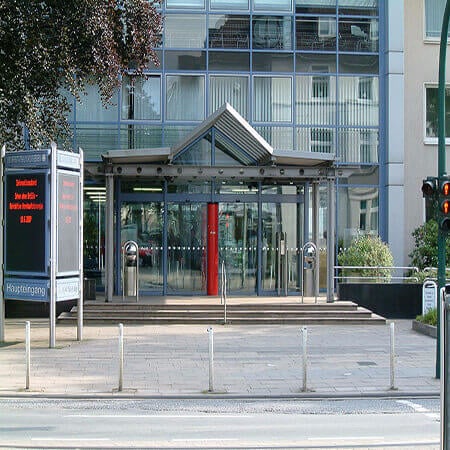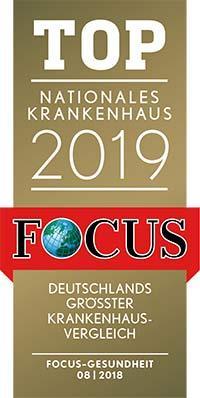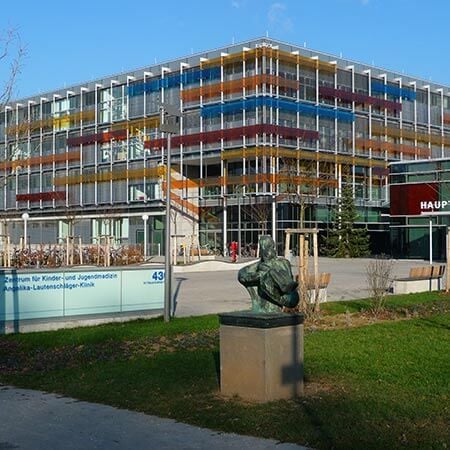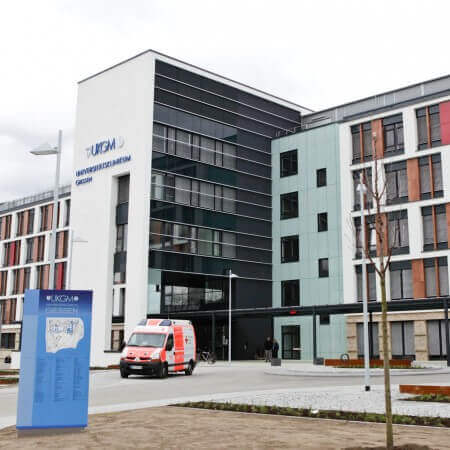Prostate Cancer — Proton Therapy: treatment in the Best Hospitals in the World
Treatment prices are regulated by national law of the corresponding countries, but can also include additional hospital coefficients. In order to receive the individual cost calculation, please send us the request and medical records.
Best Hospitals in the World for Prostate Cancer Treatment
- Diagnostics
- Prostate cancer | PSMA-PET
- Radiation therapy
- High intensity focused ultrasound (HIFU)
- Brachytherapy
- Transurethral electroresection
- Radical prostatectomy
- Lutetium-177 PSMA (Lu-177)
- Da Vinci prostatectomy
- Intensity-modulated radiation therapy (IMRT)
- Chemotherapy
- Irreversible electroporation (NanoKnife)
- Photodynamic therapy

Department of Adult and Pediatric Proton Therapy
The Department of Adult and Pediatric Proton Therapy offers the full range of proton treatment and it is one of the leading and most progressive medical facilities of this kind not only in Germany, but throughout the world. The proton therapy is mostly used for the treatment of tumors of the eye, brain, spine and pelvic organs. Also, the proton therapy is an excellent treatment of tumors in children, since it has a minimal negative effect on the immature, sensitive tissues of the child’s body.







National Center for Tumor Diseases (NCT) Heidelberg
The National Center for Tumor Diseases (NCT) Heidelberg offers the full range of diagnostics and treatment of various oncological diseases. Since its foundation in 2004, the center has gained a reputation of one of the leading in Germany. The center is supported by the German Cancer Research Center (DKFZ) and the German Cancer Aid (Deutschen Krebshilfe). The center treats about 60,000 patients from 45 countries every year. Thanks to the outstanding research activities, the department has the very latest therapeutic opportunities that save lives for thousands of people.


Proton Therapy Center
The Proton Therapy Center specializes in an innovative type of radiation therapy for children, namely proton therapy. The medical facility is one of four centers in Germany offering proton therapy for cancer treatment in young patients. The center has been working since October 2015 in close cooperation with the Marburg Ion Beam Therapy Center and today can boast exceptional clinical experience in the field of its competence. Proton therapy is significantly superior to conventional radiation therapy in terms of dose control, dose distribution and side effect profile. Thus, it is an excellent alternative form of cancer treatment. The main advantage of proton therapy is that it has potentially fewer immediate and long-term side effects as compared to classical radiation therapy. The harmful effects on healthy tissues during proton therapy are minimized, which is especially important for children, as their brain and body are in the growth phase. In addition, proton therapy is provided on an outpatient basis and is an absolutely painless treatment, which is also important for young patients.

Prostate cancer is a relatively non-aggressive malignant tumor. It can be treated using different methods, including surgery, external beam radiation therapy, brachytherapy. With early detection, most cases of the disease can be successfully cured. But in modern medicine, it is important not only to cure the pathology, but it is also necessary to ensure a high quality of life for the patient after the victory over cancer.
Most of the existing treatments cause manн problems. These can be impotence, loss of control of urination and defecation. To reduce the risks, doctors are looking for new ways to destroy cancerous tumors, namely more spraring and safer ones. One of these methods is proton beam therapy. It differs from conventional radiation in that protons are used as a source of radiation for prostate cancer patients, but not photons.
Content
- What is proton therapy
- Benefits of proton therapy for prostate cancer
- Safety of proton therapy
- Uniformity of dose distribution
- Impact on the risk of secondary cancer
- Proton therapy for localized prostate cancer
- Accelerated proton therapy
- Radiation therapy after surgery
- Lymph node irradiation
- Why is it better to undergo prostate cancer treatment abroad
- Treatment in Europe with Booking Health at an affordable price
What is proton therapy
Proton therapy is a variant of irradiation of a malignant tumor with radiation, in which protons are used as a radiation source. They are better than the conventionally used photons in that they release radiation not along the entire trajectory of movement towards the target, but only inside the tumor. Further on the tumor, the radiation quickly fades away, literally over a period of several millimeters. Therefore, the tissues located behind the neoplasm are not affected by radiation.
For the irradiation of neoplasms, protons are better than photons. They are safer, allow undergoing the course of irradiation faster, and can even be used to suppress radioresistant tumors or irradiate complex targets located near vital organs. But so far, protons are used less often than photons, mainly because of the high price. In addition, proton therapy is not available everywhere: many patients have to travel abroad to take advantage of this safe type of radiation.
Benefits of proton therapy for prostate cancer
Irradiation is among attractive treatment options for prostate cancer for many patients. It allows curing the disease even without surgery. Moreover, it excludes any invasive interventions, pain, and long-term recovery. The patient does not need to stay in the hospital for a long time. The procedure for irradiating a tumor with radiation does not cause even the slightest discomfort.
However, radiation inevitably enters the organs surrounding the tumor:
- Bladder.
- Rectum.
- Bowel.
- Bulb of penis.
As a result, the patient develops post-radiation complications. Sexual function and urination are affected, bowel function is disrupted. The inflammation of radiation affected internal organs can occur.
Proton therapy is safer. The irradiation from protons to the surrounding organs is minimal. At the same time, with the help of protons, it is possible to deliver a similar dose of radiation to the tumor, while obtaining the same therapeutic result.
An additional benefit of proton therapy is that fewer fractions can be used to deliver a standard dose of radiation. This means that prostate cancer treatment will be faster for the patients. They will not have to attend radiation therapy sessions every day for a month and a half. Instead, only 7-10 proton irradiation sessions are sufficient.
Safety of proton therapy
Most men diagnosed with prostate cancer want to be cured with minimal damage to their health. Many want to preserve the possibility of having sex. These goals are becoming more realistic due to proton irradiation.
There have already been dozens of dosimetric studies that have compared different proton therapy options with the advanced types of photon irradiation. Proton therapy options are as follows:
- Passive scattering technology – a conventional technique that has been used for decades.
- Active pencil beam scanning or intensity modulated proton therapy (IMPT) – a new technique that only appeared in the 21st century.
Here are some options for prostate when using photons as a radiation source:
- IMRT – intensity modulated radiation therapy.
- VMAT – volumetric modulated arc therapy.
Even with all the benefits of innovative photon radiation therapy, which is the main treatment for prostate cancer in Europe, protons still show clear safety benefits. When using proton beams, the radiation dose for the rectum is reduced by 25%, and for the bladder by 20%. Some studies show a 40-63% reduction in radiation dose to the organs surrounding the prostate.
The safety of protons has also been confirmed in clinical studies. Pederson et al found that the risk of grade 2 or higher rectal toxicity after proton therapy was 40% lower. Yahya et al found that the volume of the bladder after irradiation with protons is larger, so the frequency of urination is lower, which is important for the patient's quality of life.
Uniformity of dose distribution
With the use of protons for prostate cancer, the radiation dose can be distributed more evenly. This is especially important for patients who want to get through the radiation faster.
The use of protons avoids the formation of foci, which receive a much higher dose of radiation as compared to other parts of the target zone. Trofimov's study showed that proton therapy reduces the maximum dose by 110% of that when using photon radiation therapy for prostate cancer patients.
Impact on the risk of secondary cancer
It is also unsafe to treat prostate cancer with radiation therapy because a secondary tumor can develop due to radiation. Yun et al found that with proton irradiation, the risk of developing radiation-induced tumors is 5 times lower than with IMRT.
Chang and his colleagues obtained similar results. They examined 558 patients who received radiation therapy. There were 30% of prostate cancer patients among them. Within 6.7 years of observation, tumors caused by radiation appeared in 7.5% of patients after irradiation with photons, and only in 5.2% of patients after irradiation with protons. It is possible that with a longer observation, the difference would have increased even more.
Proton therapy for localized prostate cancer
For years, doctors have been treating the early stages of prostate cancer with protons. Slater et al published the results of a retrospective (in fact, conducted prior to treatment) study involving 1,255 patients. For patients with the prostate-specific membrane antigen (PSMA) levels of up to 4 ng/ml, the risk of recurrence within 5 years was only 10%, for patients with the higher PSMA levels, the risk of recurrence over the same period of time was 25%. As in other studies, scientists have confirmed the safety of proton therapy for prostate cancer: toxicity grade 3 and higher developed in only 1% of patients.
Three studies at the University of Florida (USA) with 212 patients showed excellent treatment results: within 5 years, biochemical relapse developed only in 1% of patients with low-risk prostate cancer, in 1% of patients with intermediate risk and in 24% of patients with high risk (aggressive types of tumors). Complications from urination developed in 2.9% of patients, and toxicity of grade 3 and higher was observed in 1% of those treated.
Even better results of treatment success were obtained in Japan. Iwata et al published a series of studies involving a total of 1,291 patients. The risk of biochemical recurrence within 5 years, even for high-risk cancer patients, was only 17%. The toxicity of the treatment was minimal: only 0.5% of complications from the intestine, 0.3% of cancer patients suffered from impaired urinary function.
Accelerated proton therapy
A reduction in the course of exposure with an increase in a single dose of radiation is called a hypofractionated regimen. As a rule, doses of no more than 2 Gy are used per session (fraction). But when using protons, the dose of radiation can be increased to 3 Gy or more, which makes it possible to perform a course of irradiation in fewer procedures.
Studies show that in patients with low and intermediate risk, this approach does not lead to a decrease in the effectiveness of treatment, or to an increase in its toxicity. The accelerated treatment was made possible by precise targeting of radiation and uniform distribution of radiation dose in tissues. The effectiveness of hypofractionated proton therapy for prostate cancer has been proven not only in retrospective, but also in prospective studies.
IMRT can also be used for irradiation with fewer sessions. However, protons provide a low frequency of toxic reactions with at least similar, if not better, treatment results.
In recent years, doctors have started using stereotactic body radiation therapy (SBRT) for prostate cancer. The tumor is irradiated in just 5 fractions. The toxicity of such treatment is somewhat higher than with prolonged and gradual irradiation. Nevertheless, the use of protons instead of photons smooths out this difference: the treatment becomes not only fast and effective, but also safe.
Radiation therapy after surgery
After surgery to remove the prostate gland, radiation therapy is usually not required. It is carried out only in the following cases:
- High risk of relapse and progression.
- Recurrence of cancer after surgery.
If irradiation is conducted for tumor recurrence, such radiation therapy is called salvage. The disease can still be cured, but the effectiveness of such radiation does not exceed 50-60%.
Under standard conditions, a total radiation dose of 70 Gy is used. If protons are used, then the radiation dose can be increased without significantly increasing the number of side effects and complications. It is assumed that with an increase in the amount of radiation, survival rates may also improve. But since protons are used infrequently after surgery to remove the prostate gland, so far there is no reliable data to support this assumption.
Lymph node irradiation
Proton therapy for prostate cancer is very beneficial for patients with metastases or a high risk of lymph node metastases. Exposing them to radiation safely is a difficult task. On the one hand, the physician must deliver at least 60-70 Gy of radiation to suppress metastatic foci. On the other hand, when using doses sufficient to achieve a therapeutic result, complications from the large and small intestines often develop. Some patients develop bowel obstruction that requires surgery. Such patients often develop a severe post-radiation proctitis with rectal bleeding.
Another problem is irradiation of the para-aortic lymph nodes. Radiation can cause damage to the liver, duodenum, and kidneys.
Protons have better dose conformity. Therefore, they are better suited for irradiating complex targets located near many important organs. It is especially safe to use protons with pencil beam scanning technology. This treatment is already available at new proton centers in Europe.
Why is it better to undergo prostate cancer treatment abroad
Not every country has centers specializing in proton therapy, especially when it comes to proton therapy for stage 4 prostate cancer. If they are, then prostate cancer cannot be treated everywhere, since protons are much more often used to suppress tumors of the brain, base of the skull and eye. Even if your country has a proton therapy center and it provides prostate cancer treatment, it is not a fact that a more accurate and safer pencil beam scanning technology is used. Finally, proton therapy may be more expensive in your country. The prices for this type of treatment are especially high in the USA and Japan. They are much lower in Western Europe and even lower in Eastern Europe, for example, in the Czech Republic or Russia.
There are several reasons for you to travel to one of the developed European countries for proton therapy for prostate cancer treatment:
- Advanced technologies, including intensity modulated proton therapy.
- Minimal risk of complications from the bladder and intestines.
- Successful and safe irradiation of even the most difficult targets, including para-aortic lymph nodes.
- The cure rate for localized prostate cancer is up to 99%.
- With the right choice of center, you can get treatment faster and cheaper.
- Foreign specialists successfully combine proton therapy with other methods of prostate cancer treatment, including surgery, drug therapy, tumor artery embolization, etc.
- Experience of performing proton beam therapy for stage 4 prostate cancer
Treatment in Europe with Booking Health at an affordable price
To undergo proton therapy for the prostate in one of the European hospitals, please use the services of the Booking Health company. On our website, you can find out the cost of treatment in different clinics, compare prices and book a medical care program at a favorable price. The cost of proton therapy for prostate cancer is between 85,300 EUR and 86,100 EUR. Proton beam therapy in a European hospital will be easier and faster for you, and the cost of treatment will be lower.
Please leave your request on the Booking Health website. Our employee will contact you and provide a consultation about treatment in Europe. Booking Health will take care of the organization of your trip. We will provide the following benefits for you:
- We will select a hospital for treatment in Europe, whose doctors use proton therapy treatment for prostate cancer.
- We will help you overcome the language barrier, establish communication with your attending physician.
- We will reduce the waiting time for the start of the medical care program and book a doctor's appointment on the most suitable dates.
- We will reduce the price. The cost of treatment in European hospitals will be lower due to the lack of additional coefficients for foreign patients.
- We will take care of all organizational issues: documents for entering the country, transfer from the airport, hotel, interpreting services, etc.
- We will prepare a program and translate medical documents. You do not have to repeat the previously performed diagnostic procedures.
- We will provide communication with the hospital after treatment in Europe.
- We will organize additional diagnostic examinations and treatment in a European hospital, if necessary.
- We will buy medicines abroad and forward them to your native country.
- We will help you keep in touch with the hospital and the doctor after treatment in Europe.
You will be treated by the best doctors in the world. The Booking Health employees will help reduce the cost of treatment and take care of all organizational issues, and you will only have to focus on restoring your health.
Authors: Dr. Nadezhda Ivanisova, Dr. Sergey Pashchenko

